Why have Digital Marketing KPIs become crucial for tracking a company’s success?
The marketing budget has been one of the most discussed topics in marketing since its inception. When traditional marketing was the only option, you had to decide between investing in TV, radio, newspapers, magazines, or events.
When digital marketing came into place, we realized that the ROI was much more easily calculated, and so were the segments and the investment needed. The possibility marketers had to follow the user pathway and conversion rates made their role much more related to analysis than creativity.
To measure the success of a budget, marketers need to follow KPIs, and that’s where this article helps you. We will discuss essential digital marketing KPIs to help you succeed in any digital marketing role. So let’s start with the basics.
What is a KPI?
Key Performance Indicators (KPIs) can be defined as measurable data that helps businesses understand where the failures and successes in their marketing efforts are coming from.
By tracking these KPIs, marketers can get a better understanding of what is working and what needs to be improved. This allows them to make necessary adjustments to their campaigns in order to achieve better results.
Why Track Your Digital Marketing KPIs?
Tracking your marketing KPIs can benefit your business in several ways. First, when you know what works and what doesn’t work in your marketing campaign, you can allocate more resources to strategies that work and reduce expenditures on those that don’t.
This can help you achieve your marketing goals at a much lower cost and grow your business faster. Secondly, it helps motivate your staff to put more effort into the marketing campaign.
For instance, when you share the data that shows the number of new clients the campaign has won for the business in the last month, they’ll be more motivated to work harder.
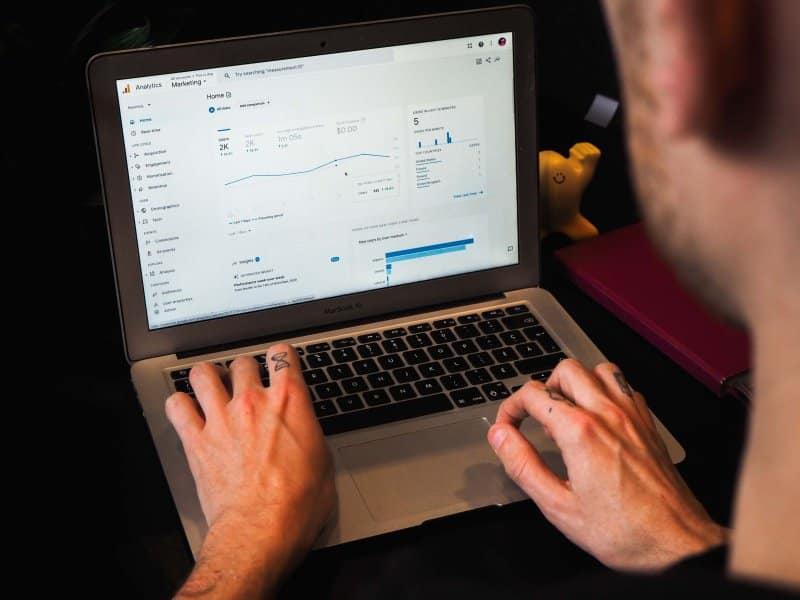
There are numerous KPIs that businesses can track to achieve their goals, but in this post, we’ll discuss the 15 most relevant and useful KPIs in digital marketing.
Let’s get started.
What Are The KPIs For Digital Marketing
Here we list the main KPIs suggested to be tracked:
- Website Traffic
- Website Traffic Channels
- Mobile Traffic
- Click-Through Rate (CTR)
- Cost Per Click (CPC)
- Bounce Rate
- Conversion Rate
- Cost Per Lead (CPL)
- Cost of Customer Acquisition (COCA)
- Customer Lifetime Value (CLV)
- Return on Investment (ROI)
- Returning Visitor Rate (RVR)
- Email Open Rate
- Email Subscribers
- Average Time on Page
- Inbound Links
- Social Media Followers
Let’s take a look at each one in detail.
1) Website Traffic
This KPI keeps track of the number of unique visitors your website receives in a given period. For instance, you can track your website traffic for the last week, month, year, etc.
Monitoring your website traffic lets you identify trends that can help you understand your target market’s habits, i.e., you can see when visitors are most active on your site.
This helps you know the best times to publish your content to ensure that more people see and read it.
Monitoring your website traffic can also help you see any significant surges or dips in your traffic, so you can pinpoint what’s causing them.
For example, suppose there’s an article in the local newspapers about your business. In that case, it can cause your website traffic to surge when newspaper readers throng to your site to get more information about your brand.
2) Website Traffic Channels
This KPI measures the origin of your traffic. For instance, your traffic can originate from social media, referrals, etc.
It’s important to review your traffic sources regularly to identify the marketing channels bringing in the most traffic so you can put more resources into them.
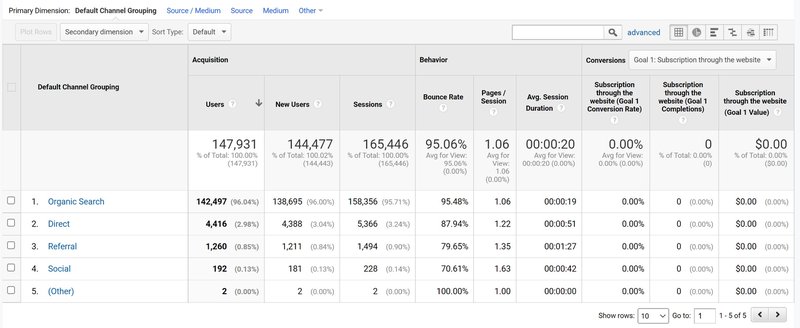
Let’s look at the five primary sources of website traffic below:
Organic traffic
These visitors visit your website by clicking organic search results on Google and other search engines.
Usually, such people go to search engines, type the word or phrase they want to know more about, find your website among the listed organic search results, and click on it.
Getting high organic traffic is often an indication that your search engine optimization (SEO) efforts are paying off. When done right, SEO can help your business rank higher in organic search results, enabling more people to find your business efficiently.
Direct Traffic
These visitors find your website by typing your URL or business name in their browsers.
Usually, they’re people who already came to your website before or got to know about you through your brand awareness activities (like sponsoring a local sports team).
So, their coming to your site is to learn more about your business or convert.
Referral Traffic
These people land on your website by clicking on your website URL from other sites.
For instance, if you do a guest post for a popular blog in your niche and include your website link at the end of the post, anyone who clicks on the link to come to your site will be a referral visitor.
Getting more referral traffic means that your net linking strategies are working.
Paid Search Traffic
These visitors land on your site by clicking on your paid ads. For instance, if you run an ad campaign on paid advertising platforms like Google Adwords, it can help to drive lots of paid search traffic back to your site.
Social Media Traffic
These users land on your site by either clicking on your website link in your social media pages or by clicking on your social media ads.
Tracking your social media traffic lets you know the traffic percentage, customer conversions, and the number of leads each social media platform brings to your business.
This information is essential because it helps you determine which channels to focus your resources and efforts to drive the highest traffic back to your site.
3) Mobile Traffic
Considering that more than 50% of website traffic in the world comes from mobile devices, it’s more important than ever to track your mobile traffic.
Mobile traffic is a metric that shows the percentage of internet traffic coming from mobile devices.
Tracking your mobile traffic enables you to better understand this market (mobile users) so you can tailor your product or service to suit their specific needs.
Some of the things you need to pay close attention to when tracking mobile traffic include the following:
- Bounce rate from smartphones and other mobile devices.
- Popular mobile devices people are using to access your site.
- The number of leads coming from mobile devices.
- Conversion rates from landing pages optimized for mobile devices.
4) Click Through Rate (CTR)
The click-through rate may be one of the most important digital marketing KPIs and metrics. This metric calculates the percentage of users who see your ad, search result snippet, post, or inbound link and click on it to come to your site.
Measuring your CTR enables you to assess your ad quality and your ad’s ability to attract the attention of your target audience.
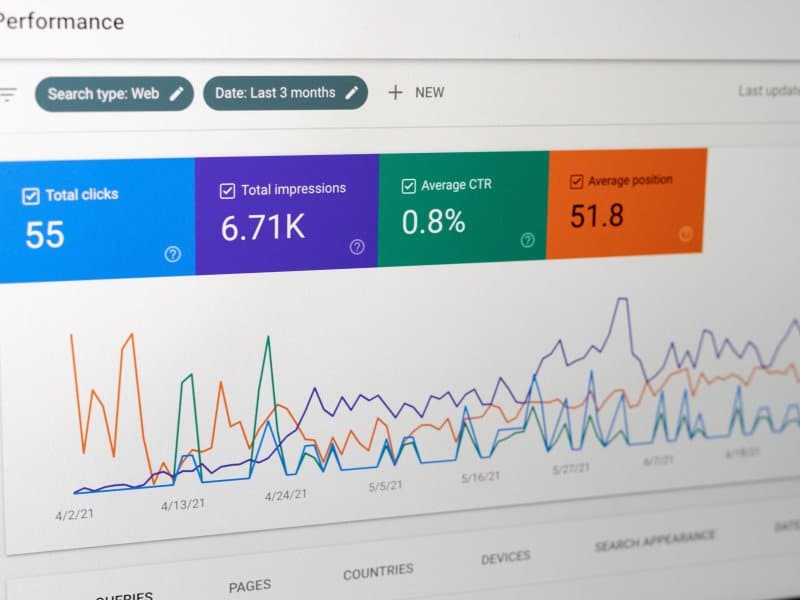
Getting a low CTR could mean your ads are not compelling enough to get people to act on them. Therefore, you should consider improving your ad messages and copy to make them more precise, relevant, and persuasive.
5) Cost Per Click (CPC)
Cost per click is the amount of money you pay for every click your ad receives in a PPC (pay per click) marketing campaign. Your CPC is determined by factors like your quality score, maximum bid, and ad rank.
Tracking this metric is vital because your ad clicks can add up quickly, making your CPC too high. And when your CPC is way up there, it becomes almost impossible to make a good return from your advertising investment.
So, it would be best to always aim for a low CPC with a high CTR. You’re paying less for every click your ad receives, yet the number of people clicking your ads is high.
6) Bounce Rate
Bounce rate refers to the percentage of visitors who exit or bounce your site after visiting just one page.
This metric is important because it indicates the user experience that your visitors are getting on various web pages.
For instance, a high bounce rate may indicate that your visitors are getting a lousy user experience, forcing them to leave your site immediately.
A high bounce rate can be caused by poor content, poor landing page layout, attracting the wrong audience, and slow page speed. Since all these factors cause bounce rates, the only sure way to reduce yours is by finding the root cause of the problem and fixing it.
You may find that a high bounce rate can happen when people find what they want on the first page of your website and leave quickly. This usually happens with blogs, for example. So you may be very careful when setting up this digital marketing KPI and following it up.
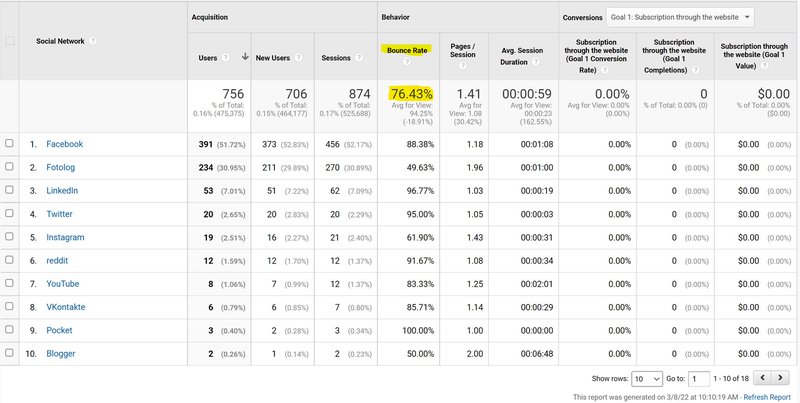
You should always aim for a low bounce rate because it shows that your visitors are happy with the experience they’re getting from your site.
And when website visitors are happy, they’re more likely to take their time browsing your pages to consume your content. This gives you a perfect chance to convert them into customers.
7) Conversion Rate
This is the rate at which your website converts new visitors into leads. It can also be defined as the rate at which your website visitors complete a specific action.
To calculate your conversion rate, you need to take the number of website visitors who clicked on your call to action to do what you want them to do and divide it by the total number of visitors you received within a given period.
For example, if your e-commerce site makes 100 sales monthly and receives 1000 unique visitors within the same period, your conversion rate will be 100 divided by 1000, which is 10%.
When you understand the percentage of your target audience who eventually convert into customers, it becomes much easier to determine if your marketing efforts are yielding fruits or not.
A low conversion rate should push you to identify areas that need improvement in your business, so you can improve them and get more conversions and sales.
8) Cost Per Lead (CPL)
Cost per lead refers to how much your business costs to acquire a new lead. It’s calculated by dividing the total marketing spend by the number of new prospective customers your campaign generates.
Tracking this metric enables you to set your sales goals, determine your advertising budget and even calculate your potential ROI.
9) Cost of Customer Acquisition (COCA)
This metric measures how much it costs your business to acquire a new customer. It’s calculated by dividing the total amount of money you use in advertising and marketing by the number of new customers you obtain within the same period.
It can also be described as the total amount of money your company spends to convert one potential customer into a real customer.

It’s different from a lead since a lead has a broader meaning than a new subscriber or a new reviewer.
Tracking your customer acquisition cost helps you measure every customer’s impact on your profits and assess the ROI you’re getting from your marketing activities.
10) Customer Lifetime Value (CLV)
Customer Lifetime Value measures a customer’s total worth to your business or the total amount of revenue a customer generates for your business over their entire engagement period.
Knowing the total worth of your current customers helps to develop effective strategies to keep them happy so they can continue being loyal to your brand.
Some things you can do to make your customers happy are smiling, warming while serving them, asking them what they want, giving it to them, and regularly calling to check on them.
11) Return on Investment (ROI)
Return on investment or rate of return is a metric used often by marketers, investors, and business owners to measure the performance of their investments over time.
It’s calculated by dividing the net profit or loss generated by the total investment cost from a given investment.

Tracking the ROI of your digital marketing campaign enables you to determine every strategy’s prospect so you can embrace the plans that have proven to work overtime and eliminate those that don’t work to save time and money.
12) Returning Visitor Rate (RVR)
Returning visitor rate is defined as the rate at which new website visitors come back to your site within two years.
When new visitors are returning to your website multiple times, it means that they’re finding value in your product or service, and they want more of it.
This can make them more receptive to your offer and increase their chances of converting into long-term paying customers.
13) Email Open Rate
This metric refers to the percentage of opened emails in a given email marketing campaign. It’s also described as the number of email subscribers who open a given email you send out there compared to the total subscribers you have.
Looking into your email open rate can help you to see whether your email marketing strategies are working or not. And if they’re not working, you can use this insight to develop better strategies to get more people to want to open and read your emails.
14) Email Subscribers
They usually say “the money is in the list”. And this is actually true.
Email subscribers are one of the most important KPIs for any digital marketing campaign. It indicates the number of people who have given you permission to contact them directly. This is valuable because it means that these people are interested in what you have to say and are more likely to engage with your content, products, and services.
There are a few different ways to increase the number of email subscribers, but one of the most effective is to offer something valuable in exchange for an email address. This could be a discount code, an exclusive piece of content, or early access to a new product.
Once you have a list of email subscribers, it’s important to nurture those relationships by sending them quality content on a regular basis. If you can keep your subscribers engaged, they’ll be more likely to make purchases from your site or recommend your products to their friends.
15) Average Time on Page
Average time on the page refers to all users’ average time on a single page on your website. Keeping an eye on this metric gives you insight into people’s behavior while on your site.
For instance, you can tell which pages they’re taking longer to interact with and which pages they’re just passing.
This is important for evaluating the relevance, quality, and value of your content on different pages, so you can make the necessary improvements to get people to stick around longer on each page.
16) Inbound Links
The last KPI you need to track is inbound links or backlinks. It shows how many internal links are coming from third-party websites to your site.
You should aim to have more inbound links because it helps to grow your business presence online, drive more traffic to your site, and boost your organic search rankings. It’s an essential factor in your SEO strategy.
Overall, tracking the proper digital marketing KPIs provides data that clearly shows where you need to invest more, cut back and improve. This is important for achieving your marketing goals quickly and cost-effectively.
17) Social Media Followers
As the world of marketing becomes increasingly digitized, social media followers have become one of the marketing metrics for digital marketing campaigns. Here’s why:
- The number of followers is key to defining the power of influencers you would work with.
- Social media followers are crucial for gauging the reach of your campaign.
- They can be a valuable source of feedback and insights for your business’s products and services.
- They help amplify your message.
If you’re looking to measure the success of your digital marketing campaign, increasing social media followers should be one of your KPIs.
Enough Digital Marketing KPIs For Today? Here Are Our Takeaways
Key Performance Indicators (KPIs) allow you to measure your marketing performance to ensure that you remain on track to achieving your marketing goals.
Digital Marketing KPIs are necessary to calculate investment risk and the ROI (Return on Investment).
Tracking your marketing KPIs can benefit your business when you know what works and what doesn’t work in your marketing campaign. You can make informed decisions to allocate more money. It’s easier to optimize your investments.
This article discusses the 15 most important digital marketing KPIs including cost per customer acquisition and customer lifetime value, so read on!

Christian has over ten years of experience in marketing agencies. Currently, he has been dedicating his time to a tech startup and also writing for major publications. He loves podcasts and reading to keep up with the latest trends in marketing.
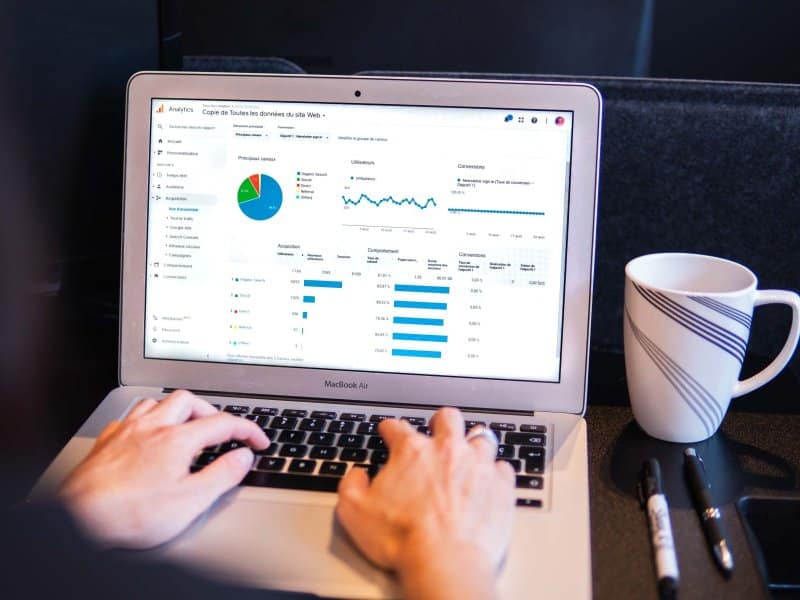
Thanks for sharing these different KPIs, very helpful content indeed. Now that I have read this, I have a better understanding of what KPIs are and their importance to the business. The next thing to do is go over the data from Google Analytics and other tools and study them for a better marketing strategy. Thanks again for sharing, I’m really grateful that I have stumbled upon this blog.
You’re welcome, Louise!
Nice post. I was checking continuously this blog and I’m
impressed! Very useful information. Thank you and best of luck.